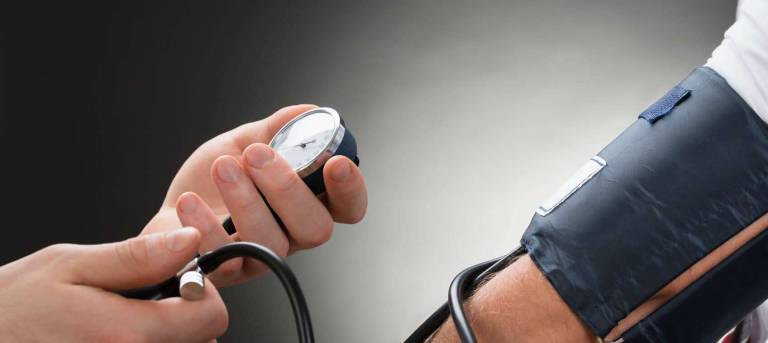Millions more people now have high blood pressure. Why that’s a good thing

By Kevin Joy
You may have read about the new blood pressure guidelines, which were designed to boost awareness about the condition and promote healthy habits.
But you might also be wondering: Am I now at risk?
In November, the American Heart Association and the American College of Cardiology lowered the threshold of diagnosis to 130/80 from 140/90. Using the new benchmark, 100 million Americans — that’s nearly 1 in 2 adults — have high blood pressure, or hypertension. This triples incidence of the condition in men and doubles it for women younger than 45.
Previously, 1 in 3 adult Americans were thought to have high blood pressure.
It’s a move that might seem odd, but it could help the health of millions long term.
“These guidelines are not the rule of law,” says Susan Steigerwalt, M.D., a clinical hypertension specialist at Michigan Medicine, “but we know that cardiovascular events begin to increase when a patient’s blood pressure is above 115/70.”
The guidelines also aren’t intended to put many more people on blood pressure-lowering medication.
“The first thing we recommend is adoption of a healthy lifestyle,” says Steigerwalt. “It’s really important not to feel powerless. There is a lot that can be done.”
What is blood pressure?Blood pressure is the measure of how hard the blood pushes against the walls of your arteries as it moves through the body. Damage to the blood vessels, heart and kidneys can result when pressure is too high. Left untreated, hypertension can have devastating long-term effects.
“There are four big risks: heart attacks, heart failure, stroke and dementia,” says Steigerwalt.
High blood pressure, which typically has no symptoms or warning signs, is referred to as a silent killer. Keeping track of your readings at annual checkups and other appointments is key.
The top number, systolic, is the pressure when your heart beats. The bottom number is diastolic, the pressure of the rest period between beats.
A reading of 120/80 or below is considered normal.
It’s normal for blood pressure to go up and down throughout the day. Which is why the new hypertension guidelines advise taking two to three readings (after a patient has rested for at least five minutes) on at least two occasions.
What causes high blood pressure?Two big contributors are a sedentary lifestyle and a high-salt, high-sugar diet. Both cause the body to work harder in different ways, which can put added stress on the blood vessels.
But in about 90 percent of diagnoses, the source of hypertension is a mystery. “We don’t know why you’ve got it, but you’ve got it,” Steigerwalt says. In the majority of these cases, the diagnosis is then called primary hypertension.
When blood pressure is abnormally high, however, there’s a greater likelihood it stems from a secondary cause such as an oversecretion of hormones from the adrenal gland. Some medications, including certain decongestants, stimulants (like Adderall) and birth control, also are associated with high blood pressure.
The new guidelines don’t mean a lot more people will need medication — at least not at first.
Lifestyle changes are the first recommended step for everyone, to lower a patient’s elevated blood pressure. These continue to be important even if medication is added.
“There is so much you can do: 30 minutes of walking every day, standing up or moving around at work and sleeping at least seven hours a night,” says Steigerwalt.
One of her biggest directives is to follow the DASH diet, a regimen designed to control hypertension with a focus on fruits, vegetables, grains and low- or fat-free dairy, as well as less meat and sugar.
Those who are overweight can benefit from losing 10 percent of their body weight, she notes. Limiting alcohol intake (one drink daily for women and two for men) can also help lower blood pressure. And, Steigerwalt adds with emphasis, “Everybody needs to stop smoking.”
Some patients may need more than diet and exercise to control their blood pressure.
“We try, if possible, to remove the (triggering) medications and modify lifestyle first,” says Steigerwalt.
Source: Michigan Health: uofmhealth.org